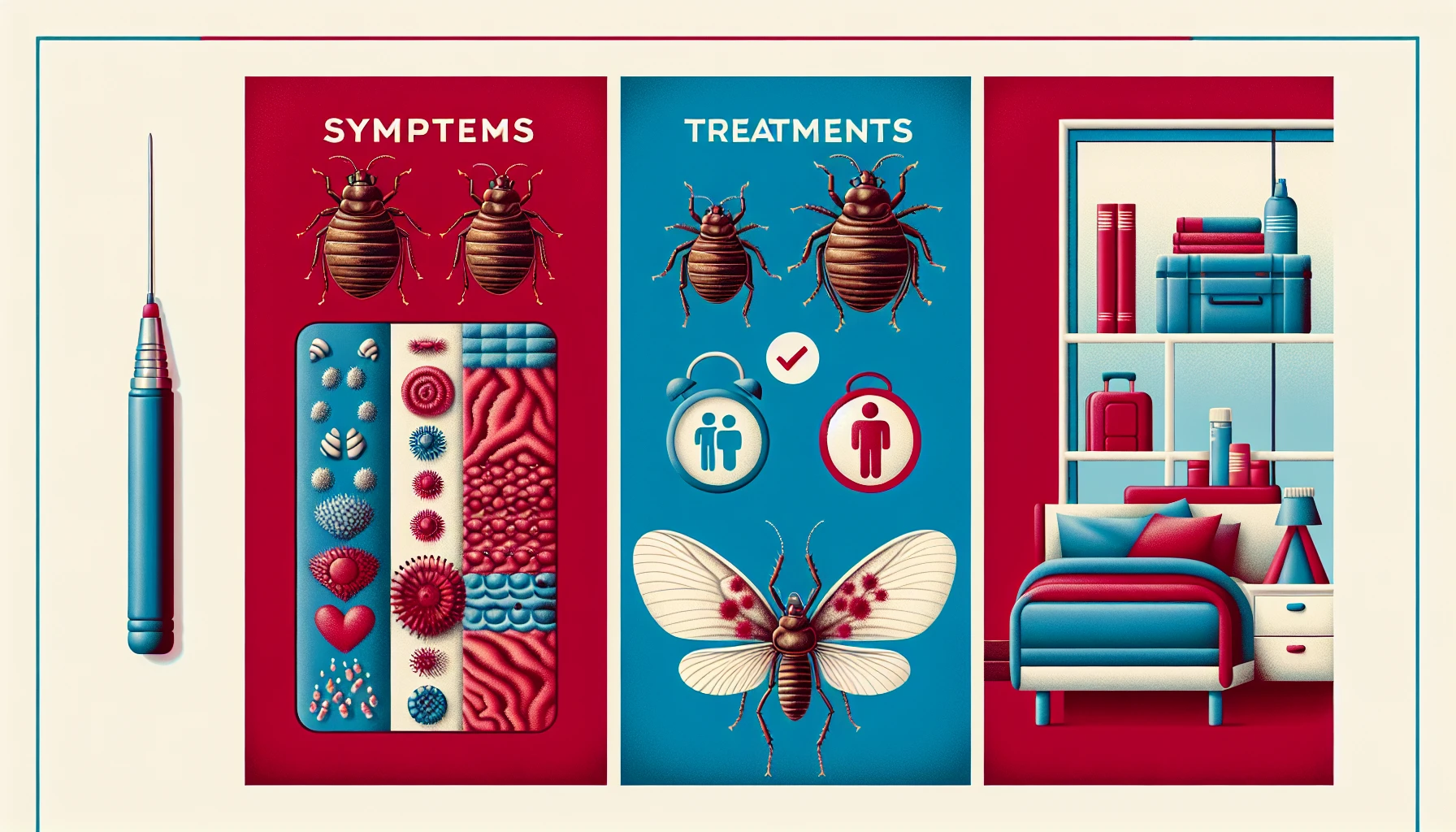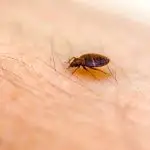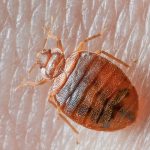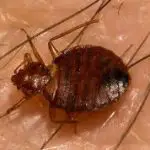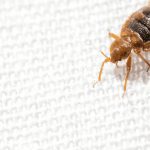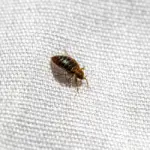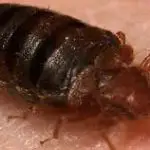Bed Bug Rash 101: Symptoms, Treatments, and Prevention
Introduction to Bed Bug Rashes
Picture this: You wake up one morning with an itchy sensation that wasn’t there the night before. You look down and see a constellation of red, swollen spots scattered across your arm. That’s right, you’ve been the midnight snack for a party of bed bugs, and you’re now sporting a bed bug rash that is as uncomfortable as it is unwelcomed.

Bed bug rashes may masquerade as mere mosquito bites, but they have their tell-tale differences. They often appear in a line or a cluster and can become exceedingly itchy. And unlike that one-off mosquito, bed bugs are uninvited roommates that don’t just buzz off after a bite. Early identification and treatment are your best bet in avoiding an all-out skin rebellion.
So, how do these rashes differ from other insect bites? It’s all in the details. For instance, flea bites prefer the ankles, whereas bed bugs aren’t so picky. They’ll dine anywhere on your body that’s exposed during your slumber. And while it’s common to have a mild reaction, some unlucky folks might experience more severe symptoms, like large, itchy welts or blisters.
To avoid turning your bedroom into a bed bug banquet, prevention is crucial. This includes regular inspections, especially if you’ve recently traveled or purchased second-hand furniture. For a deeper dive into distinguishing these pests from other home invaders, you can explore a guide on spotting the differences with insect bite identification.
Remember, while a bed bug rash isn’t exactly a sign of the apocalypse, it’s not something you should ignore. Nip it in the bud and reclaim your restful nights and rash-free days.
Unveiling the Enemy: What are Bed Bugs?
Ever woken up with itchy welts and wondered where they came from? Enter the bed bug, a pest as stealthy as a shadow and as annoying as a mosquito at a barbecue. Bed bugs are the secret agents of the insect world, but instead of gadgets, they come armed with piercing mouthparts ready to sample your blood while you slumber.

These tiny bloodsuckers are master hitchhikers, clinging onto luggage, clothing, and furniture, eager to find a new home to infest. With a penchant for the cozy corners of your mattress, bed bugs turn your place of rest into their private dining room. But it’s not just beds; they’re equally comfortable in couch seams or the darkness behind baseboards.
Feasting mostly by the cloak of night, bed bugs execute their mission with military precision. They stealthily approach, bite, and retreat before you even realize you’re under attack. Each bite is a calculated move, leaving behind a trail of irritations and unpleasant reminders of their presence. Like unwelcome guests, they overstay their welcome and reproduce at an alarming rate, turning a small problem into an all-out invasion.
But fear not, your sanctuary can be safeguarded. Vigilance and swift action are key. Discovering these pests early and employing efficient detection strategies help keep these uninvited diners from turning your home into their permanent residence. After all, your skin wasn’t meant to be a buffet for bed bug bites.
Symptoms of Bed Bug Bites
Picture this: You wake up one morning, your skin itching, and spot a constellation of small, red welts scattered across your arms and shoulders. Chances are, you’ve been feasted on by bed bugs—those tiny, elusive pests that sneak in for a nibble and leave you with troublesome skin issues. Identifying the symptoms of bed bug bites is the first step in tackling the problem.
Let’s dive into what these little rascals leave behind. Contrary to popular belief, bed bug bites can manifest in various ways. For some unlucky folks, the bites appear almost immediately, offering an unmistakable itchy souvenir of a sleepless night. On the flip side, you might belong to the group that notices the telltale signs hours or even days later—a delayed reaction that can range from mild irritation to severe inflammation.
The bites themselves look like small, raised bumps. You might find them in a line or haphazardly spread out, betraying the bed bug’s random foraging path. And let’s talk reactions—if you’ve got sensitive skin, brace yourself for a ride that includes redness, swelling, and that infuriating itch that just won’t quit. Some folks might even experience blister-like eruptions or hives that make you want to scratch your skin off (don’t do that, it’s a terrible idea).
Imagine being at a barbecue, Alec, a friendly neighbor, rolls up his sleeve to show off a fresh cluster of bites. “Got these bad boys from my last motel stay,” he chuckles, unaware that what he thought was a minor annoyance could spiral into sleepless nights if not addressed promptly. It’s not just the bites that are the issue; it’s the potential for a full-blown infestation if these critters hitch a ride home.
Knowing how to recognize and respond to bed bug rashes is crucial, but equally important is understanding how to keep those pesky bugs at bay. Bed Bug Treatment Strategies You Need to Know Now offers invaluable advice on prevention, ensuring your home remains a sanctuary, not a snack bar for bed bugs.
If you’re experiencing what you suspect to be bed bug bites, don’t wait; take action! Early detection and treatment can make a world of difference. And remember, bed bugs are not selective; they’ll dine on anyone. Be vigilant, keep your environment clean, and always inspect your sleeping area when traveling to keep these uninvited guests out of your bed.
The Diagnosis: Identifying Bed Bug Rashes Correctly
Ever woken up with a series of small, itchy red welts and wondered what creature has taken a liking to your skin while you snoozed? Let’s dive into the telltale signs of a bed bug rash, distinguishing it from other nocturnal nibblers’ aftermath.
Size and Shape: A Detective’s First Clue
Imagine this: You’re enjoying a lovely dream about sunbathing on a tropical beach, only to be rudely awakened by a maddening itch. Classic bed bug bite evidence? Maybe. Here’s the scoop: bed bug bites often appear as small, flat, or raised areas that may swell into red welts. Unlike the singular chomp of a mosquito, bed bugs are greedy, leaving a line or a cluster of bites in their wake, as if they’re plotting a constellation on your skin.
The Itch Factor: More Than a Nuisance
The itch from bed bug encounters is next-level annoying. For some lucky folks, it’s a mild irritation; for others, it’s a full-on battle with incessant scratching. And let’s be real, scratching only invites a cascade of issues like infection. Remember, not everyone reacts the same, but if you find yourself part of the itchy club, take note—it’s a classic sign of bed bug artwork on your epidermis.
Location, Location, Location
Now, let’s talk real estate. Bed bugs, those strategic little critters, usually go for exposed areas while you’re lost in dreamland. Think face, neck, arms, and hands. If you discover a rash in these areas after a night’s rest, bed bugs could very well be your uninvited bedfellows.
Timing Is Everything
One thing that sets the bed bug rash apart from other imposters is the timeline. These bites often take a few days to develop after the bed bug banquet. So, if you’re breaking out in itchy spots a couple of days after changing your sheets, it’s time to start sleuthing for bed bugs.
Alright, now that you’re armed with the criteria to tell if those pesky red marks are indeed bed bug bites, take a closer look at your situation. When in doubt, seek professional advice. And because we’re living in a visual age, here’s a video that will guide you through the signs and symptoms of a bed bug infestation, because sometimes, seeing is believing:
If everything points to these unwelcome guests, don’t panic. Remember, knowledge is power, and you’ve just leveled up your bed bug IQ. It’s time to reclaim your domain and say goodbye to those illicit midnight snackers once and for all!
Treating Bed Bug Bites

Woke up with an itchy, red rash that’s got you doing a double-take in the mirror? Before you spiral into a web diagnosis frenzy, let’s consider the cheeky culprits known as bed bugs. That’s right, these sneaky little critters can leave you with a signature rash that’s as uncomfortable as it is unwelcome. But fear not! Treating bed bug bites can be straightforward and, more often than not, can be handled right at home.
First things first, let’s play it cool and clean the affected area with mild soap and water. This simple yet effective first-aid step can prevent infection and ease the itch. Picture this: it’s like putting out a tiny fire on your skin before it becomes a blazing inferno. And nobody wants that, right?
Home Remedies That Pack a Punch
Now, let’s talk about the heavyweight champs of home remedies – those household heroes that you’ve probably got stashed in your cabinet already. A dab of calamine lotion or a soothing bath with oatmeal can work wonders. These remedies are like a nurturing hug for your skin, telling those bites, “Hey, it’s going to be okay.”
Have you heard of cold compresses? That’s right, the good old-fashioned ice pack. Applying a cold compress can be like that refreshing cold sip on a hot day – instant relief. And a sprinkle of baking soda mixed with water? It’s not just for cookies, my friend. It can be a gentle yet effective mix for calming down those pesky bites.
But sometimes, these bites can be like that one guest who overstays their welcome at a party. If redness, swelling, or itching persists, it’s time to show them the door by consulting a healthcare professional. Remember, everyone’s skin throws its unique shindig, so if over-the-counter remedies aren’t cutting it, seeking medical attention can lead to a prescribed remedy tailored just for you.
Now that we’ve armed you with these skin-saving tips, don’t let bed bugs throw a wrench in your beauty sleep. With the right treatment, a bed bug rash can become nothing more than a “rashional” memory. So, stay vigilant, and keep your bedroom a bed bug-free sanctuary!
Professional Help: When to Call the Exterminator
Picture this: It’s another quiet evening at home. You’ve just settled down in your cozy bed, ready to drift off to sleep, when suddenly you feel that all-too-familiar itching sensation. Oh no, not again! You’re pretty sure you’ve been taking all the recommended steps to deal with those pesky bed bugs, but here you are—facing the unmistakable signs of a bed bug rash. You’ve reached the point where DIY solutions are just not cutting it anymore—it’s time to call in the pros.

Let’s be real, bed bug infestations are a challenge for even the most seasoned DIY-ers. These stubborn critters require more than just a can-do attitude; they demand professional intervention. When questions like “Why can’t I get rid of these bed bugs?” or “Are these treatments even working?” start keeping you up at night, it might be time to call a professional exterminator.
Understanding When to Wave the White Flag
It starts with a strategic surrender. Acknowledging you need help isn’t a sign of defeat—it’s a tactical move towards victory over bed bugs. Even if you’re the type who’s used to tackling problems head-on, sometimes expertise and specialized equipment are what it takes to nip an infestation in the bud. After all, it’s not just about spraying chemicals around; it’s about comprehensive plans of attack that outsmart these crafty invaders.
The Exterminator Edge: Why Pros Do It Better
Professional pest control services come with their artillery of tools and knowledge specifically designed for bed bug battles. They’ve seen it all, from minor skirmishes to full-blown invasions, and they’ve got a game plan for every scenario. They don’t just target adult bed bugs; they go after the eggs and the sneaky ones hiding in the tiniest of crevices. Have you ever thought about the logistics of heat treatment or the precision required for insecticide application? That’s where pros show their prowess.
Real-Life Rescue: Case Studies
Take Sarah, for example. She tried every home remedy under the sun but nothing worked. It wasn’t until she called the pros that she found out about the small crack in the baseboard where bed bugs were staging their comeback night after night. Or consider Mike, who spent a fortune on over-the-counter sprays before realizing they were no match for the infestation at hand. The professionals didn’t just treat his bed bug problem—they provided him with peace of mind and a pest-free home.
If your slumber has been stolen by the incessant itch of bed bug bites, and your efforts resemble a never-ending game of whack-a-mole, it’s high time to reach out for professional help. Expert exterminators don’t just eliminate the problem; they educate you on prevention, ensuring your nights are serene and bite-free. Don’t let the bed bugs win—reclaim your space and your peace of mind with professional pest control services.
Preventive Strategies to Keep Bed Bugs at Bay
Ever stayed at a hotel and woke the next day to the horror of itchy welts? That’s a telltale sign you’ve unwillingly shared your room with bed bugs! Let’s dive deep into keeping these unwelcome hitchhikers out of your home and your luggage. It’s easier than you might think to fend them off!
First up, let’s chat about your living space. It’s all about being a detective in your own home—inspect secondhand furniture like a pro. Remember, bed bugs are sneaky little critters that love to hide in cracks and crevices. So give that vintage sofa a good look-over before inviting it into your home.
Next, think about creating a bed bug barrier. Cover your mattress and box spring with protective encasements. These are like superhero capes for your bed, warding off those pesky pests. No secret entrances here, bed bugs!
Traveling Without Unwanted Souvenirs
Travel often? Listen up! When you’re hitting the road, keep your luggage off the ground and away from the bed or furniture in your hotel room. Use luggage racks or place your bags in the bathtub (yes, the tub!). It’s a nifty trick since bed bugs are abysmal climbers on slick surfaces.
Done with your adventure? Don’t just waltz back into your home. Think of your suitcase as a potential Trojan horse for bed bugs. Unpack outside if you can, and immediately wash all your clothes in hot water. This routine is your first line of defense against an infestation taking root right under your nose.
And oh, here’s a killer tip—get into the habit of vacuuming your suitcase after each trip. It’s like conducting a mini bug exorcism for your belongings. Plus, if you really want to seal the deal, pop your luggage into a large chest freezer for a few hours. The extreme cold sends bed bugs into eternal slumber.
Seeing as we’re living in the digital age, why not use technology to your advantage? There are bed bug alert systems that let you know if these insects are around. Set them up in your home and stay one step ahead of any potential infestation. Knowledge is power, after all!
Now that you’ve geared up with these strategic insights, you’re well on your way to maintaining a bed bug-free zone. Remember, diligence is key: consistently apply these tactics and bed bugs won’t stand a chance!
Frequently Asked Questions
When it comes to bed bug rashes, everyone has questions. Is that red spot from a bug in my bed? How do I treat it, and better yet, how can I make sure it never happens again? Relax, we’ve gathered the most common queries and dived deep for the answers you need.
What does a bed bug rash look like?
Imagine this: you wake up and as you’re scrolling through your morning emails, there’s an itchy sensation on your arm. You glance down only to find a constellation of small, red, and sometimes puffy marks. They tend to follow a line or cluster — a classic calling card of a bed bug banquet at your expense.

How do I treat a bed bug rash?
First things first, don’t panic. A bed bug rash isn’t a bed bug; it’s your body’s response. For most of us, a dash of antiseptic cream and an anti-itch lotion should do the trick. Remember to keep the area clean and resist the urge to scratch — we know it’s tough, but your skin will thank you for it.
Are bed bug rashes dangerous?
Generally, bed bug rashes are more annoying than hazardous. However, if you’re allergic or the area becomes infected due to scratching — cue dramatic music — it’s time to see a doctor. Keep an eye out for fever or increasing pain; those are red flags.
How long does a rash caused by bed bugs last?
Imagine you got a nasty mosquito bite on that camping trip last weekend. Annoying, right? Well, bed bug rashes are similar. They can last anywhere from a few days to a couple of weeks, depending on your skin’s sensitivity and how you’re treating it.
Can I prevent bed bug rashes?
Ah, prevention, the holy grail. Step one: Know thy enemy. Keep your bedroom clean and clutter-free — bed bugs are like little mischievous ninjas hiding in the shadows. Invest in a protective mattress cover, and if you’re staying at hotels often, do a quick bedbug check. And remember, vigilance is key. Don’t let those bed bugs bite!
